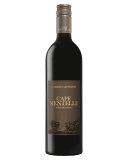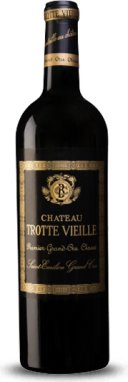Château les Carmes-Haut-Brion
Château Léoville-Barton St-Julien
From the smallest parcel of the Leoville estate, comes Chateau L?oville-Barton, a once mid-tier level 2nd Growth that has accelerated in quality and interest since the reinvigoration of current proprietor Anthony Barton in the mid 1980s. The rich, gravel-and-clay soils host a predominately Cabernet Sauvignon base of vines, though Merlot and Cabernet Franc also factor. New oak use is kept to around 50%, and the wines are notable for their purity yet power. 2010 is no exception, with a wine that drives with authority across the palate, while providing the baseline for a long time of pleasurable cellaring. Rightfully called one of the most exciting producers of St-Julien.
Henschke Cyril Cabernet Sauvignon
Concentration is the key word for this wine. Super ripe fruit, dense and rich, matured for an extended time in toasty new oak. Complex, vibrant aromas of violets, plums, blackberries and cassis with dried rosemary, thyme and oregano nuances, and a hint of beef stock, cedar and star anise spice. The palate is powerful yet incredibly finely structured with layers of plums, blackberries and red currants, guided by elegant acidity and tannins that integrate with the fruit and lead to a long, fine, beguiling finish. Exceptional vintage, 25+ years (from vintage).
Château Duhart-Milon Pauillac
Left in a sorry state by the previous owners, in 1962 the Rothschilds of Lafite took over the property and begun to reconstruct the vineyard which was planted mostly to Petit Verdot. 4 decades later and the wines of Château Duhart-Milon are now showing the flavour and concentration you expect from such a site in Pauillac.
Caels Gate Handpicked Cabernet Sauvignon
On the palate, dark, rich berries with olive and mild pepper can be noted, accompanied with a balanced structure and supple tannins. Full-bodied with an aromatic display of clove, nutmeg, and smoky oak. Aromas of sweet redcurrants lovely rich palate, which has drying wood tannins and some lovely soft acid.
Château Talbot St-Julien
The old school of the UK wine market have long loved the wines of Chateau Talbot, and the 2010 would have them purring. Chateau Talbot is a producer that occupies a large (102 hectares) swathe of land under vine in Medoc and makes wines that are set to a more traditional style, including rich wood scents, firm tannins, some rustic charm and a cassis-meets-violet fruit profile. This is a superb release of the wine, reminscent of classic Talbots that are sinewy when young, but still approachable, and for enthusiasts, glorious with cellar time.
Cape Mentelle Cabernet Sauvignon
Cape Mentelle's Cabernet Sauvignon under the guidance of Rob Mann has become one of Australia's most prestigious Cabernet's. Sourced from what many believe to be the true home to Cabernet in Australia, the Margaret River, Cape Mentelle produce a wine that has a plush full-flavoured palate of concentrated blackcurrants and mulberries with a minerally spine. Richly textured and vibrant the palate finishes long with fine yet firm gravelly tannins. A superb candidate for some medium to long term cellaring.
Chateau Quintus Grand Cru St-Emilion
Château Montrose
France's Bordeaux, is the spiritual home of the Cabernet family of grapes, which extends beyond Sauvignon and Franc to Merlot, Malbec and Petit Verdot. If you love Margaret River Cabernet blends, or indeed the Merlot dominant reds of Hawkes Bay, NZ, then you must look at the wines upon which many of them have been modelled. This wine is Cabernet and Merlot, deep and rich, cassis and earthy cedar, structure and uncommon length - all hallmarks of Grand Cru Bordeaux.












